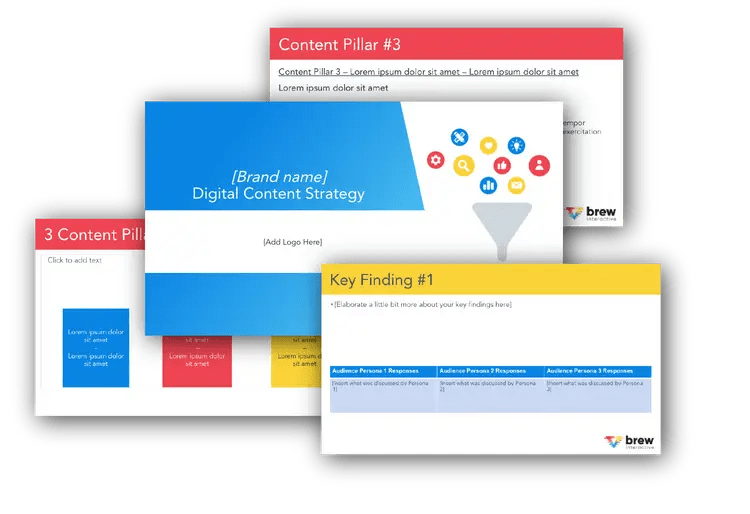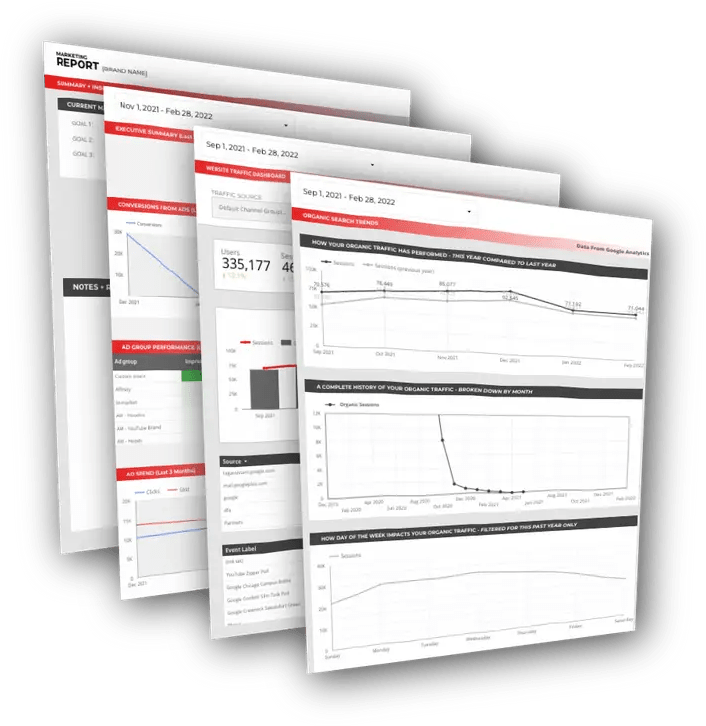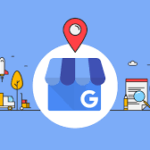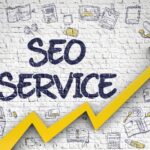Quality content can help you generate tons of organic traffic, social shares, and establish yourself as a thought leader in your industry. But how do you establish a content strategy truly effective for lead generation? It’s when your content provides your prospective buyers with the guidance they need as they move through the various stages of the customer journey.
Such content aims to provide them with the information they need to make a buying decision at the exact moment that they need it. This can help you attract, engage, and move your prospects through the sales funnel more efficiently while reinforcing your relationships at each stage.

This comprehensive guide will help you learn how to create content that’s aligned with every stage of your buyer’s journey. But first, let’s take a quick look at the various stages of this journey.
The B2B Buyer’s Journey
The B2B buyer’s journey is basically the process that business buyers go through to:
- Identify and become aware of a business problem
- Evaluate various solutions to solve it
- And finally, decide to buy a particular solution

The B2B Buyer’s Journey | Source: HubSpot
It consists of 3 main stages:
- Awareness (Top of the Funnel, TOFU for short) – At the start of their journey, most buyers are unaware that they might have a business problem that needs a solution. They might also be unaware that your company can solve this problem for them. However, they might be experiencing some symptoms of the problem. Your job as a content marketer is to make them aware of the problem and their pain points at this stage.
- Consideration (Middle of the Funnel, MOFU for short) – Once they are aware of their business problem, business buyers would begin researching for solutions. At this stage, they’re looking to understand what options are available in the market and would most likely turn to Google. Your job at this stage is to make sure that they can easily get their hands on educational resources that describe how you can help them solve their problem.
- Decision (Bottom of the Funnel, BOFU for short) – Once they have evaluated the available solutions, your buyers will be looking to decide which vendor to purchase from. Your job at this stage would be to provide them brand-specific content and help sway their decision in your favor by sharing proof of what your solutions can do.
What Kind of Content is Suitable at Each Stage?
Let’s now dive deeper into what kind of content would be suitable for each stage of the B2B buyer’s journey.
1. Awareness (Top of the Funnel, aka TOFU)
At this stage, your buyers are likely to face some symptoms of their business problem. Most of them would turn to Google in order to learn more about these symptoms. This is the stage where they look for insights, answers, opinions, resources, and data. So, they’re likely to use search terms such as:
- Issue: “I’m facing an issue with ____”
- Troubleshoot: “How to troubleshoot ____”
- Risks: “What risks are associated with ____”
- Resolve: “How to resolve ____”
- Upgrade: “I need to upgrade ____”
- Optimize: “I need to optimize ____”
- Prevent: “How to prevent ____”
- Improve: “How to improve ____”
Marketing Tip: Provide educational content to your buyers at this stage that helps to answer their queries. Interactive content would be an example of such educational content. Here are some good instances of content headlines for TOFU content:

Free B2B Content Strategy Template
Not sure where to start when it comes to your content strategy? Struggling to gain traction? Grab our free B2B content strategy template to help you document your strategy.
- X Tips to Improve Strategic Resource Management
- X Simple Steps for Better Workforce Planning
- How to Plan and Implement CRM successfully
- Whitepaper: How to Ace Your Local SEO Game
For example, when I search for “how to improve marketing automation,” the first search result is a Salesforce blog post that contains tons of useful information including links to various research studies, whitepapers, and ebooks. This is a great example of the kind of content you should use to engage buyers in the awareness stage.

An example of content suitable for buyers in the awareness stage
2. Consideration (Middle of the Funnel, aka MOFU)
At this stage, buyers are aware of their business problem and are trying to find the best solution. So, they’re likely to use search terms such as:
- Service: “What services are available for ____?”
- Solution: “What solutions are available for ____?”
- Provider: “Which providers can help with ____?”
- Supplier: “Which suppliers can help with ____?”
- Software: “Which software are available for ____?”
- Tool: “What tools are available for ____?”
- Device: “Which devices are available for ____?”
Marketing Tip: At this stage, provide content to your buyers that demonstrate why your solutions are the best fit for their business problem. Here are some good examples of content headlines for MOFU:
- X of the Best Project Management Tools Recommended by Experts
- Do you own a Startup? Here are the Best Tools You Need to Grow
- Best App Development Software: Reviews 2019
Here’s a great example of MOFU content from Microsoft. It’s a whitepaper in which they describe why their Azure platform is the best solution for data scientists and developers to build intelligent software:

An example of content suitable for buyers in the consideration stage
3. Decision (Bottom of the Funnel, aka BOFU)
At this stage, the buyer is ready to make a purchase decision but there’s no guarantee that they’ll choose your solution. They’re likely to use search terms such as:
- Compare: “How does ____ compare to ____?”
- Comparison: “I need price comparison between ____ and ____”
- Versus: “I need product specifics of ____ versus ____”
- Pros and cons: “What are the pros and cons of ____”
- Benchmarks: “What benchmarks have ____ been compared against?”
- Review: “I need reviews about ____”
Marketing Tip: At this stage, you need to provide the final nudge to your buyers using compelling offers and calls-to-action. Some effective content formats you can use for BOFU are:
- Brand-specific product literature
- Trial offers
- Case studies
- Customer testimonials
- Live Demos
Here are some great examples of customer testimonials on Okta’s website:

Examples of content suitable for buyers in the decision stage
How to Create Content for Every Stage
Now that we have a fair idea of the various stages in the buyer’s journey and what kind of content is most suitable at each stage, let’s find out how to create such content.
Step 1. Understand Your Buyer Personas
The first step towards creating content aligned to every stage of the buyer’s journey is to define your buyer personas. Knowing your buyers well is the key to creating content that will resonate with them.
Step 2. Understand the Search Intent of Each Buyer Persona
To create great content and to make sure that your target audience can find them, you need to conduct proper keyword research. However, this doesn’t necessarily mean that you should target keywords that have the highest search volumes (because they’re likely to be highly competitive too).
So, the best way to do your keyword research is to understand the search intent of your buyer personas. Think about the questions they might ask at each stage of their journey. This will help you identify a list of keywords you might want to target and also identify relevant topics that your buyers are likely to be interested in.
We can broadly divide keywords based on search intent as follows:
- Informational – Keywords that a user would search for to gain general knowledge on a topic. For example, “What is marketing automation?”
- Navigational – Keywords a user would search for when they know the destination they want to reach. For example, “Salesforce marketing automation tools”
- Commercial Investigation – Keywords a user would search for to gain information on something that they want to buy at some point. These can include comparisons or keyword modifiers such as “best.” For example, “Which are the best marketing automation tools?”
- Transactional – Keywords a user would search for when they’re ready to make a purchase. For example, “Buy marketing automation tools”
Here’s how these keyword groups map to the various stages in the buyer’s journey:

You might be wondering how to identify which group a particular keyword would fall under. An easy way of identifying this is to check the modifier attached to the keyword. For example, “best marketing automation tools” or “top marketing automation tools in 2019.”

Commonly used modifiers for each of the keyword groups | Source: Ahrefs
Now, using these modifiers and the most commonly used keywords in your industry, create a list of keywords that your buyer personas are likely to use at each stage of their journey.
Step 3. Use a Keyword Research Tool
You should then use a keyword research tool to analyze the search volumes and competition for each of the keywords you’ve identified in the previous step. Here’s how you can do so using the Ubersuggest tool. Just enter a particular keyword, select your language and location from the dropdown, and hit “SEARCH.”
For example, if I were to conduct keyword research for a project management (or resource planning) software, I would type in “resource planning” as you can see in the screenshot below:

You will be able to see the monthly search volume, organic ranking difficulty, paid search ranking difficulty, and CPC for the particular keyword.

In the “Keyword Ideas” section, you’ll be able to find some additional keyword suggestions for the keyword you have entered. This can give you some more ideas for content topics.

You can export this list of additional keywords to a .csv file and browse through the list to identify your TOFU, MOFU, and BOFU keywords. The screenshot below shows an extract of the .csv file I’ve generated for my keyword search.

The table below shows how I’ve categorized some of these keywords (based on their modifiers):

Such categorization will help you pick relevant keywords when you create content for every stage of the funnel. We’d also recommend creating pillar content for each major topic.
Step 4A. Use Competitor Analysis
It’s not always possible to create a comprehensive list of keywords using modifiers and industry specific keywords. Here’s where an analysis of your competitors’ content can help. Try to find the topics and keywords that drive the most traffic to your competitors’ sites. You can use Ubersuggest for this too. Simply enter the domain name in the tool and hit “SEARCH.”
For example, if I’m trying to promote my resource planning tool, one of my competitors could be Atlassian. I’ve entered their website URL in Ubersuggest and here’s what I got:

You will be able to see the pages on that site that get the maximum traffic as well as the keywords that drive traffic to it. This can help you uncover some additional keywords and topics. Once you have identified a few of these, follow steps 2 and 3 above to analyze search intent and ranking difficulty for those keywords.
Step 4B. Check Viability
Once you’re able to find suitable keywords and topics using the steps mentioned above, check if you can plug in your solutions into such content naturally. Or ask yourself if someone searching for these queries might be interested in your solutions. If not, then it won’t be wise to spend your time and resources in creating content around those keywords and topics.
For example, if your company provides training and certification in Agile methodologies, then you can very well create content using keywords such as “Agile development best practices” or “Agile best practices.” Users who are likely to search for these terms might be looking for training or guidance in Agile and so, it makes good sense for you to plug in your offerings into such content naturally.
However, a related keyword like “Agile interview questions” might not be worth creating content around. This is because these searchers will be looking to understand the kind of questions they might be asked in a job interview. They wouldn’t be interested in training or certifications.
Final Thoughts
The most important thing to remember when you create content for each step of the buyer’s journey is to understand their search intent in these stages. This will give you a fair idea of the keywords to target as well as the informational needs of your buyers at every stage. If you’re able to provide your buyers with relevant information at the exact moment that they’re looking for it, you can attract and engage them more effectively.

Free DataStudio Marketing Report
Improve your marketing reporting with our free DataStudio template that pulls data from Analytics, Google Ads, and Search Console to get a 360 degree view of your digital performance.





